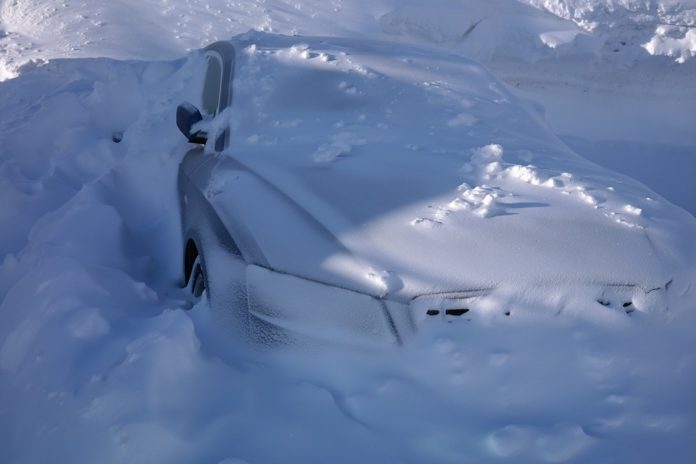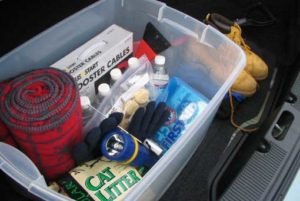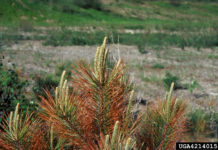
I hate to bring up what is probably one of the most dreaded, dirty, six-letter-words in a Minnesotan’s vocabulary, but I really need to talk about… winter. I’m sorry. I know it’s too soon; I know it’s still only September.
But, as some businesses have already started selling artificial pine trees and christmas lights I figure I’m safe to bring it up.
There is one particular situation some of us (many of us) have had to deal with during the long winter. It might be the second-worst thing that can happen, besides getting into an accident: waiting for a tow truck or for a family member to help after a break down in winter. This can be anything from a mechanical breakdown to actually ending up in the ditch.
We are going to talk first about having a winter emergency kit.
I have had the lovely experience of not being prepared for a car breaking down. On a day that was about 30- with the wind chill, I had the alternator on my vehicle go out at 4:30am. I was lucky enough to get to a Target parking lot before I was stranded, where I then had the pleasure of sitting in said vehicle for 45 minutes and being the coldest I have ever been while waiting for a friend to come and save me. I had nowhere to go, and was woefully unprepared. Needless to say, I learned my lesson and now have an emergency kit stashed permanently in my trunk.
Be prepared this winter
Here’s what you should have:
Tire Jack/Lug Wrench/Spare
Ensure that you have your tire jack, lug wrench, and that your spare is properly inflated. Or, better yet, that you even have a spare in the first place. There’s worse than going to grab your spare and having the space where it should be empty remind you that you needed one. If possible, try and have a full size spare, as the “doughnut” tires can make driving hard in winter weather due to their dimensions. Ensure you are familiar with changing a tire by checking your owner’s manual for your vehicle (or this is a great video by Bridgestone Tire).
12 volt Car Charger
You need your phone. You need to call for help, after all. You reach to dial the number, or are finally connected with a formerly-sleeping friend and it suddenly goes dead. By having a charger in your car that plugs into one of your 12v outlets, you’ll be able to charge your phone and make any necessary calls.
Blanket
If you car is unable to run, you won’t have heat. The best type of blanket to have is one of those nice, heavy wool blankets. You can also buy what many call “space blankets” for pretty cheap online or at most superstores. (“Space Blankets” are those super shiny thermal blankets). Make sure you have enough for each person in the vehicle.
Kitty Litter
It doesn’t have to be kitty litter specifically, but I have had really good luck with using it when I can’t get traction. Plus, it’s cheap and you can pick it up anywhere. But realistically you can also buy sand for the same purpose. Or anything gravelly. Just make sure you have something, as this can be the difference between being stuck and going on your way.\

Gas Can
We’ve all run out of gas at one point. Either a typical gas works, or you can buy a collapsible one that will be flat until you need it to save space. The other danger in winter: Any water in your gas tank will have frozen and will result in your vehicle not starting. There are two ways to combat this in the winter: Keep your tank as full as possible, so that moisture can’t build up, or add a bottle of fuel deicer once a month during the winter months.
Jumper Cables
We’ve also all left our lights on and killed the battery at least once. You might need a jump for a myriad of reasons: Old battery (check your battery; most are only good for 5 years before they start having issues), cold temperatures, no block heater, etc. Plus, if you have cables you can be someone else’s hero as well. But really, none of us want to be the person asking for a jump to then say they don’t have cables. Another option is to buy a portable jump starter that is essentially a defibrillator for your car.
Water
You’ll want to be cautious with how you go about doing this. Buying bottled water can work, just make sure you get bottles that have ridges in them. The ridges will allow the water to expand as it freezes. I have friends that use metal water cans from Army Surplus stores, and Thermos that aren’t filled all the way. I found a tip here that if you do fill your own bottles of water to add salt and sugar. Salt water doesn’t freeze as quickly as “plain” water, and the sugar can help with the taste.
Food
Not talking about sandwiches or actual food items. I’m talking about things like protein and energy bars that are calorie dense and filling. Meals ready to Eat (MREs, like our military uses) are an option, but you have to be careful as some can be time and temperature sensitive. Canned soup, mini candy bars, semi sweet chocolate bars, and hard candies are other food to keep on hand for a quick energy and satiation (MN Public Safety).
Windshield Ice Scraper/Brush
An ice scraper can be used to clear the windshield and windows of your vehicle. And, if need be, can be used to clear out behind your tires. The brush can be used to clear snow from your vehicle in order to keep it visible to rescue vehicles and passersby.
First Aid Kit
This one is pretty self-explanatory. In the case of an accident or injury, after going into the ditch, say, it will most certainly come in handy.
Shovel
This is also fairly self-explanatory. A shovel can help you dig out of a ditch, or unblock your tailpipe in the event you are stuck in a ditch. It can also come in handy when you are in a parking lot or parked on the street and a plow pushes a berm of snow up against your car, blocking you in.
Flares
Having flares is mainly about visibility. It warns drivers that you are broken down and alerts people that you may need help. Another function is to get people to slow down if you are at the bottom of a hill by placing them at the top of the hill as a warning. Flares can also be used to melt snow, or if your water did freeze to thaw your water.
(Just because it needs to be said: If using the flare to thaw water, do not use it inside your vehicle.)
Basic Tool Kit
This doesn’t need to be anything fancy. You can get a cheap tool kit or buy a toolbox or a tackle box and make sure you have the necessities: Make sure you have a basic socket set, flat head and phillips screw drivers, adjustable wrench or basic wrench set, electrical tape, duct tape, pliers, and a hammer. I would also say to keep some spare fuses in your tool kit also, just in case.
Flashlight
There is nothing worse than trying to figure out what is going on during a breakdown and not being able to see anything. You can use any battery operated flashlight and make sure you have spare batteries (maybe keep them in your toolbox). Another option is to get a crank flash light that is powered after cranking it. With no batteries to worry about, it is something that will be there when you need it. This is a great option made for the American Red Cross. It even has a USB charger, and you can use to charge a phone.
Extra Clothes
I typically keep an extra set of clothes, winter boots, extra gloves and hat, and a pair of winter overalls in my trunk. Layers are your friend when broke down, and in the case of your vehicles’ battery being dead when you won’t have any heat.
Candles and Matches
Small tealights are a great source of light and heat. You can make a radiant heater by placing the candles in the can and lighting them (I found this idea here.) Store the candles and matches in ziplock bags and place them in the can when not in use. If you use a metal can with a lid, everything can be kept together.
Optional items for winter preparation
Tow Strap
Having this on hand is super helpful if someone stops that has a vehicle capable of either pulling you out of a ditch or even towing you to a nearby parking lot, auto mechanic, or maybe even home if you are close enough.
Hand and Foot Warmers
If you have ever gone ice fishing or had to work outside and used these, they are fantastic. And if you shop around you can find some decent deals on them like here on Amazon.
Now, there is one final piece of information I would like to stress that really applies no matter the season you are traveling: Tell people not only where you are going, but give them a travel itinerary of how you are getting there and when you plan on reaching your destination and heading back. This will allow people to send help or go looking for you if things don’t go as planned.
Boom. Safe travels everyone.
PRO TIP: The Minnesota Department of Public Safety, Homeland Security, and Emergency Management have also created this great Winter-Survival Brochure. You can check it out HERE.
Read this next: It seems like we’ve had a lot of snow this winter, but it’s not nearly enough
















